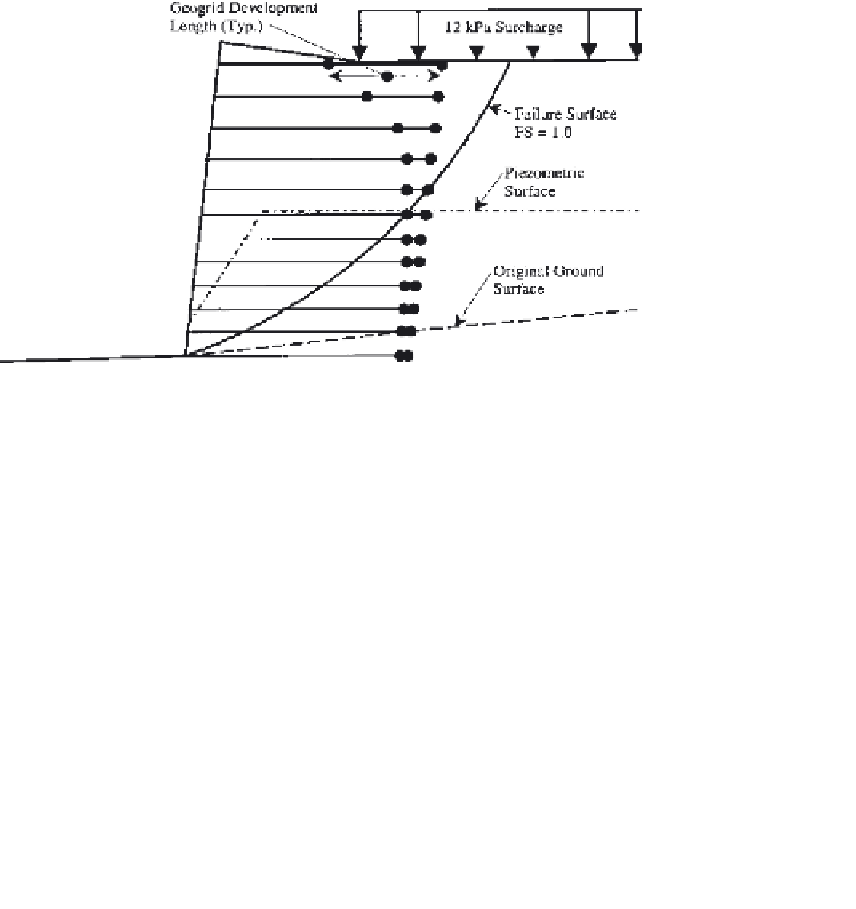Geoscience Reference
In-Depth Information
Figure 7
Slope stability output for factor of safety of 1.0.
6 CONCLUSIONS
The first failure occurred rapidly without showing obvious signs of movement.
Circumstances surrounding the failure pointed to a buildup of hydrostatic
pressure as the primary cause of failure. This hydrostatic buildup was likely due
to several construction deficiencies. First, the joints of the storm sewer pipe
entering the drop inlet behind the wall were open. Second, the drop inlet and pipe
were bedded in crushed stone, which was connected to the drainage material
behind the wall facing, causing a “short circuit” for water leaking from the open
joints. Finally, significant soil intrusion was observed into the drainage stone
behind the facing, reducing the ability to drain water from behind the wall. A
second cause of failure, considered important but secondary at the time of failure,
was a reduced shear strength from poor compaction and a lower coefficient of
interaction due to the saturated silts. Creep movement and possibly differential
settlement between the facing and backfill materials most likely caused the facing
to fail first, leaving the slightly deformed reinforced mass standing.
The second failure occurred much more slowly and exhibited a classical
scarp and obvious deformation at the face prior to failing. Again, this resulted in a
facing failure with a much more deformed reinforced soil mass still standing.
This failure was likely due to reduced shear strength from poor compaction and a
lower coefficient of interaction of the saturated silts.
The in-situ testing performed during tear down of the first failed section
indicated that the backfill did not meet the specified degree of compaction. The
undisturbed samples obtained during drilling prior to the second failure also









Search WWH ::

Custom Search